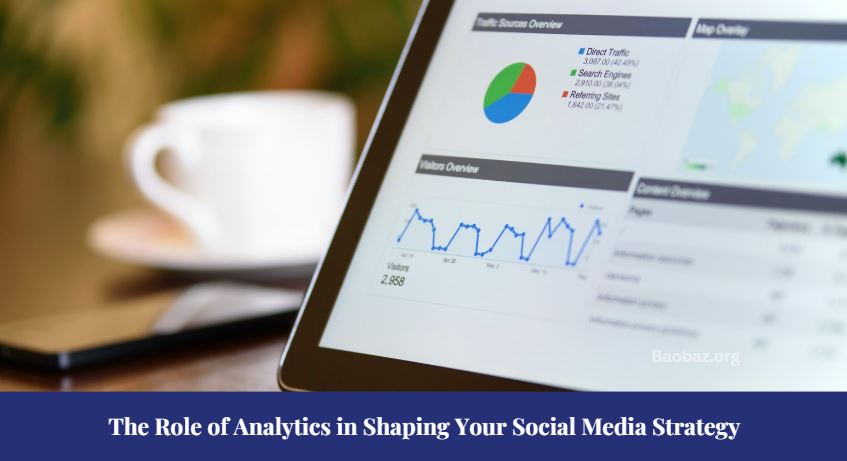In today’s digital age, having a strong social media presence is crucial for businesses to connect with their target audience and achieve their marketing goals. However, simply posting content regularly is not enough. To truly make an impact and drive meaningful engagement, businesses need to dive deep into the analytics behind their social media efforts. This is where the power of social media analytics comes into play.
What are Social Media Analytics?
Social media analytics involves gathering and evaluating data to assess the effectiveness of a company’s social media presence. It provides insights into the impact of social media efforts on broader business objectives, helps monitor customer sentiment, identifies trends, and pre-empts potential public relations issues. By analyzing interactions such as likes, comments, shares, and saves, as well as employing social listening for brand mentions and consumer insights, businesses can comprehensively evaluate their performance.
Key Performance Indicators (KPIs) for Social Media Analytics
To measure the impact and effectiveness of a social media strategy, it is important to identify and track key performance indicators (KPIs). These metrics can be broadly categorized into several areas: reach, engagement, conversions, customer satisfaction, and share of voice. Each category provides valuable insights into different aspects of a company’s social media presence.
Reach KPIs
To hit your KPIs in the world of online gambling and betting, think of your social media content as your ace in the hole. Just like placing a strategic bet, achieving visibility through metrics like profile impressions, reach, followers, and audience growth rate is key to ensuring your content makes its mark on users far and wide. Imagine each click as a wager on the digital table, where monitoring your audience’s growth rate unfolds like a thrilling game, revealing the success of your efforts to attract new followers over time. For a guide on mastering these metrics in the gambling sphere, click here, and let’s roll the dice on elevating your social media strategy.
Engagement KPIs
Engagement metrics identify how users interact with social media content. Likes, comments, shares, and saves are standard metrics. Comments, in particular, reflect a deeper level of engagement as they indicate users’ willingness to engage in conversations around the content. Shares and saves also suggest that users find the content valuable enough to redistribute or bookmark for later reference.
Conversion KPIs
Conversion-focused KPIs measure the effectiveness of social media content in driving specific actions, such as website visits, sign-ups, or purchases. Click-through rates (CTR) and conversion rates provide insights into the content’s compelling nature and its effectiveness in leading users toward desired actions. Monitoring these metrics helps refine the approach to improve outcomes.
Customer Satisfaction KPIs
Customer satisfaction metrics gauge customers’ satisfaction with products or services based on their interactions on social media. Customer satisfaction scores (CSAT) and review ratings directly reflect customer experiences and perceptions. Keeping an eye on these metrics helps proactively address issues and maintain high customer satisfaction.
Share of Voice KPIs
Share of voice metrics helps understand a brand’s visibility and prominence compared to competitors. Brand mentions and branded or campaign hashtags indicate how much the brand is being discussed. Tracking these metrics provides insights into the brand’s market position and areas that require increased visibility or engagement.
Awareness and Customer Retention Metrics
Awareness metrics, such as impressions and reach, are crucial for understanding the reach of content. Customer retention and loyalty metrics, such as net promoter scores (NPS) and social commerce metrics, offer insights into customers’ likelihood to recommend the brand and continue purchasing. These metrics gauge the health of the brand and the loyalty of the customer base.
By monitoring and analyzing these KPIs, businesses can gain comprehensive insights into their social media performance. This data-driven decision-making approach enhances strategy, content, and engagement across platforms.
Understanding Your Audience
To create a successful social media strategy, it is essential to understand the target audience. Analyzing audience demographics, interests, and online behavior helps tailor the content strategy to match their preferences. This understanding ensures higher engagement rates and a more significant impact.
Identifying Content Performance
Understanding which content formats, topics, and posting times achieve the best engagement is critical. This data is invaluable for optimizing the content strategy, allowing businesses to focus on what works best for their audience. Experimenting with different types of content and analyzing their performance helps fine-tune the strategy for maximum impact.
Competitive Analysis
Analyzing competitors’ social media performance offers insights into industry benchmarks and successful strategies. This analysis helps identify gaps in the strategy and opportunities for differentiation. By understanding what competitors are doing well, businesses can adapt and improve their own social media approach.
Real-World Examples
Brands like Nike and Starbucks have successfully used social media analytics to transform their social media presence. These companies have tailored their content to increase engagement and brand loyalty by analyzing engagement metrics and audience insights. By leveraging social media analytics, businesses can learn from these success stories and apply similar strategies to their own social media efforts.
Final Thoughts
To effectively use social media analytics in shaping a strategy, start with clear goals and select appropriate KPIs. Regularly monitoring engagement metrics, understanding the audience deeply, and adjusting the content strategy based on performance data is essential. Competitive analysis provides valuable insights for improvement.
Platforms like Google Analytics, Hootsuite, and Sprout Social offer comprehensive analytics features to track social media performance. Implementing these insights into the strategy can lead to improved content engagement, a better understanding of the audience, and a more robust online presence.

